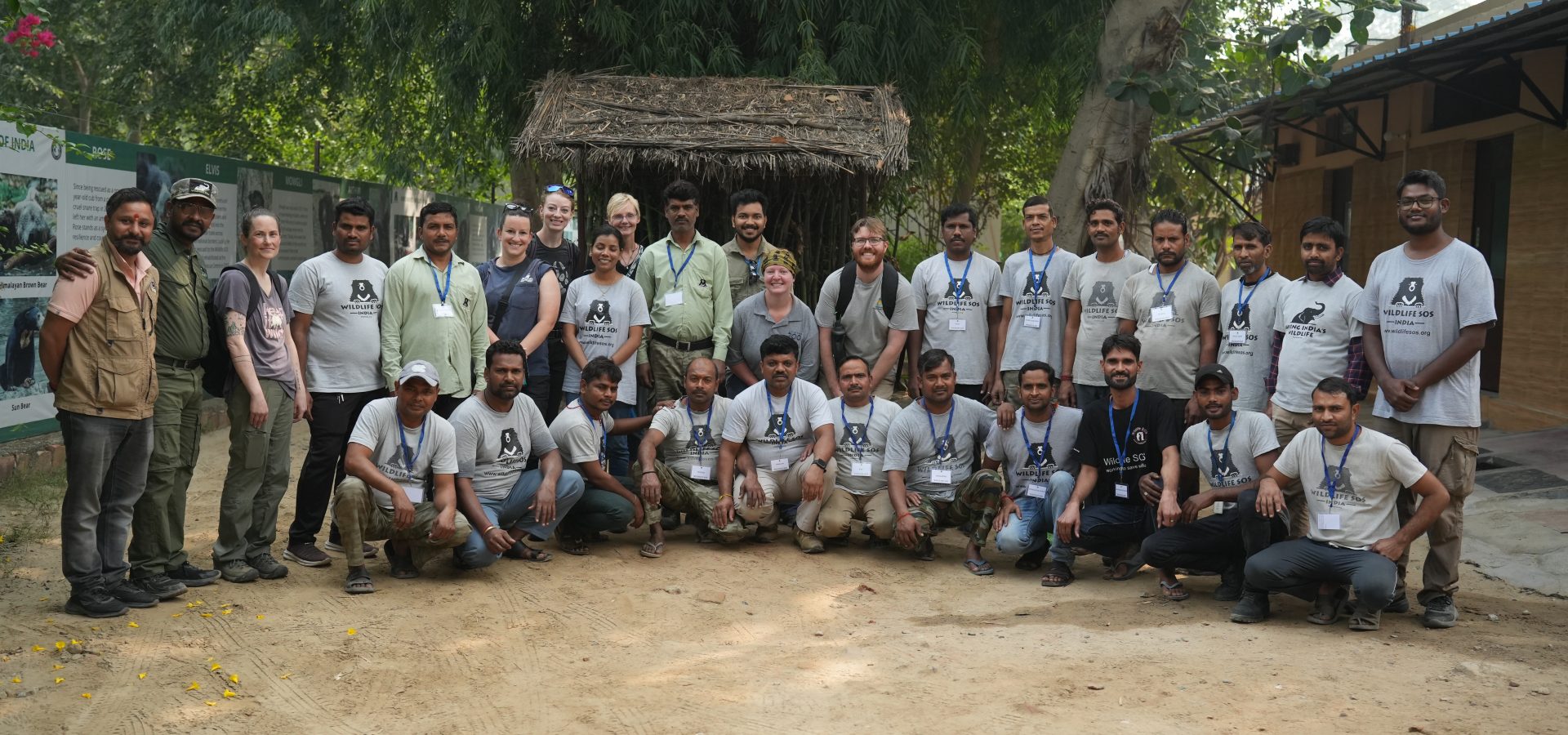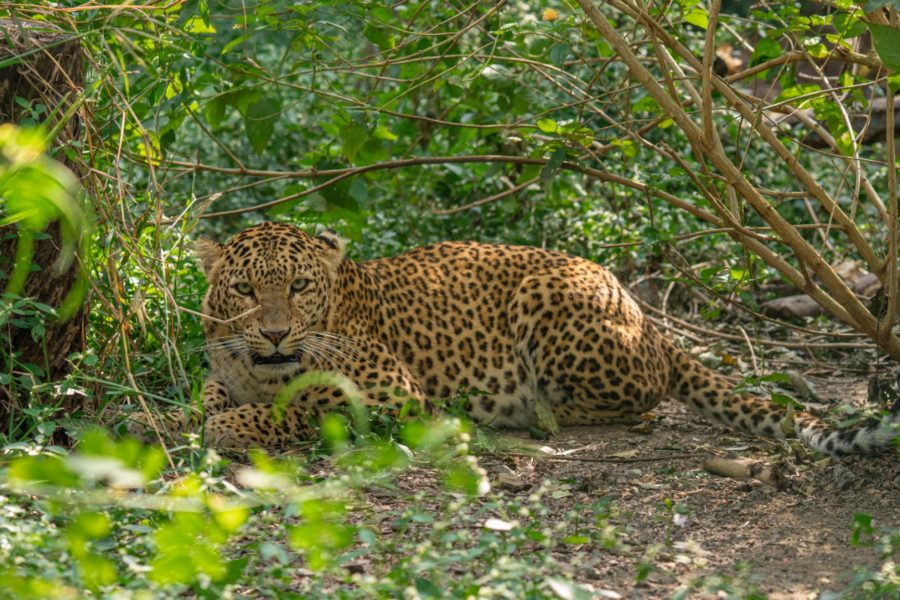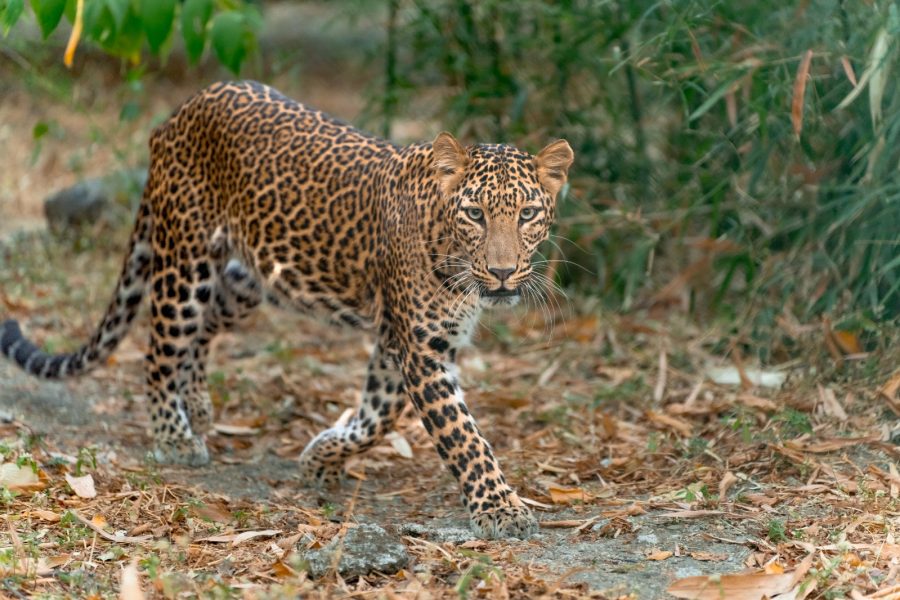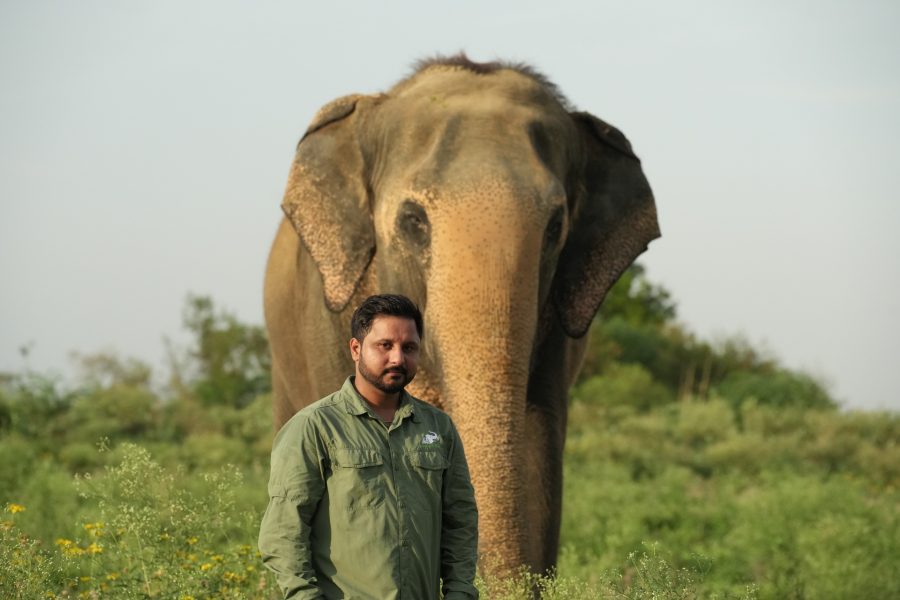The transition from October to November brought with it an enriching learning experience at the Agra Bear Rescue Facility (ABRF). The Bear TAG team from the United States visited our centre for a week-long knowledge exchange workshop on ex-situ conservation of sloth bears. During this workshop, our bear care staff had the opportunity to receive guidance from experienced keepers of various U.S. zoos as they shared their skills in animal care practice. In return, members of our staff apprised the visiting team of their expertise in managing various aspects of sloth bear care.
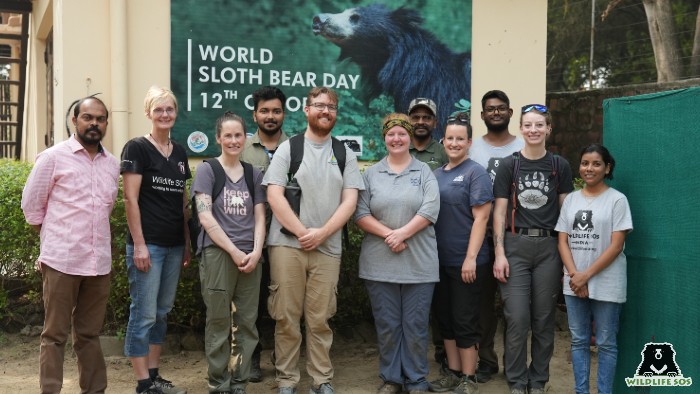
The Bear TAG SAFE Workshop Collaboration took place from October 29th to November 4th, and saw participation of 10 animal keepers from institutions like the Smithsonian’s National Zoo and Conservation Biology Institute in Washington, Cleveland Metroparks Zoo in Cleveland, Sunset Zoo in Manhattan, Little Rock Zoo in Arkansas, and the Grizzly and Wolf Discovery Centre in West Yellowstone. Bear caregivers from our centres and our veterinary team actively participated in this initiative held at ABRF.
The Bear Taxon Advisory Group (Bear TAG) is a collaborative effort among accredited zoos and wildlife facilities that focus on rehabilitated bear species’ management and conservation. It includes separate TAGs for different bear species that include grizzly bears, polar bears, and giant pandas, and this aims to develop and implement care, breeding, and conservation strategies. Bear TAG is among similarly accredited bodies that are a part of the Association of Zoos and Aquariums (AZA) in the U.S., and their team’s goal is to ensure the well-being and care of rescued bear species.
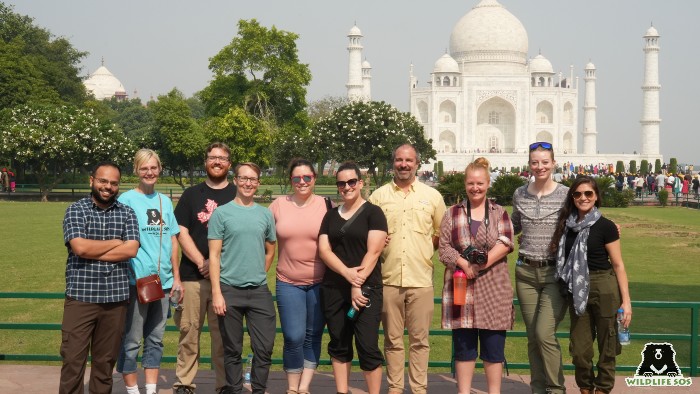
During their visit, the Bear TAG team and our sloth bear care staff exchanged valuable insights on target training practices for diagnostic purposes that are conducted for bears. Along with this, the discussion included the creation of enrichment devices for our rescued sloth bears at ABRF. Being in Agra for the workshop, the international participants also had the opportunity to explore India’s cultural and natural wonders, including the Taj Mahal and Ranthambore Tiger Reserve. The weeklong visit concluded with a guided tour of the Elephant Conservation and Care Centre (ECCC) and the Elephant Hospital Campus (EHC) that provided them with a comprehensive view of our elephant conservation and care initiatives.
What is Target Training?
Target training is an operant conditioning technique used to guide animals on how to perform specific behaviours in response to auditory or visual cues or a designated target. Within our rescue centres, we use the principles of positive reinforcement to facilitate animal cooperation during medical examinations such as conducting general health checkups, administering medicines, and providing first aid. This helps minimise stress and the need for sedating the animal, thus adhering to a humane and constructive approach that is centred around rewards and cooperation.
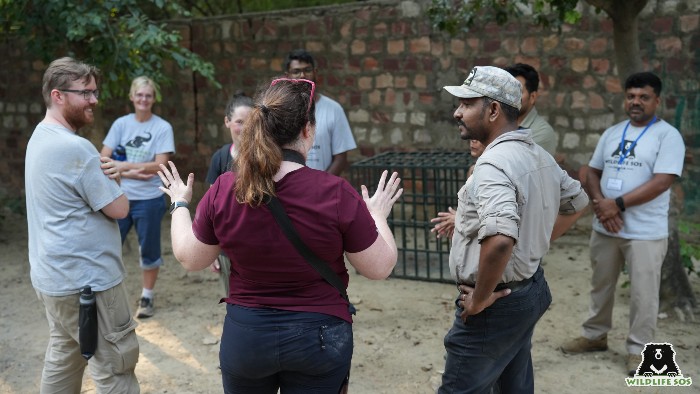
The process of target training comprises multiple stages. It starts with the introduction of a designated target or cue, encouraging the animal to interact with it, and then rewarding the animal for their correct responses. This sequence is performed again in subsequent sessions until the desired behaviour is perfected. Gradually, more intricate tasks are also introduced that may require time for the animals to become comfortable with. Repetition of these tasks serves to prepare animals for actual medical treatments, if and when they take place.
At our centres, during this training process, our animal staff reward the sloth bears with their favourite treats, such as honey or dates, each time they respond effectively. This enables our team to form a positive and trust-based connection with them.
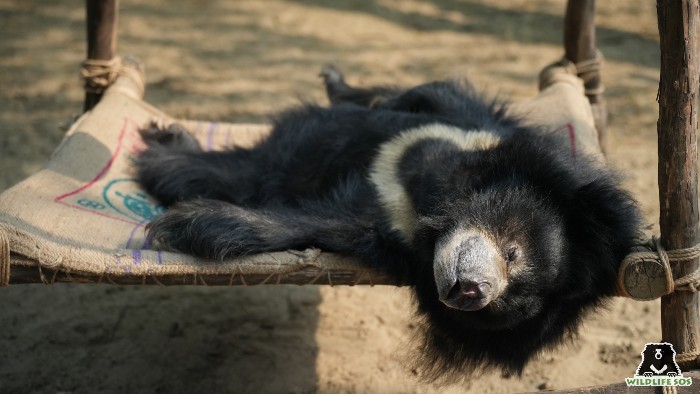
Our highly skilled staff has been training the resident sloth bears to stand, sit, and present their hand as and when required. These allow veterinarians to administer first aid, trim their nails, and even draw blood from the forelimbs of these bears. Additionally, our staff can also conduct the ‘open mouth’ command that prompts the bears to display their teeth for veterinarians to assess their dental health.
Having exchanged the knowledge of how these techniques are followed, the Bear TAG team came forward to introduce new target training cues to our team to enhance the capability of diagnosing our resident sloth bears. These cues include:
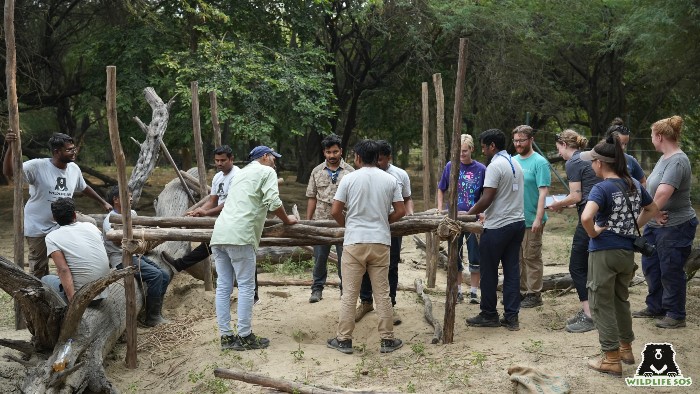
- Side Body and Shoulders Presentation: This allows for the bear’s body condition scoring and touch diagnosis of muscle mass, which aids in evaluating the overall health of the sloth bears.
- Hindlimb Presentation: This specific training is crucial for geriatric and arthritic bears, as it enables intramuscular injections and blood draws. It reduces the need for the bears to sit or stand on their limbs for extended periods of time, which can be challenging for them.
- Tooth Brushing: Tooth sensitivity in sloth bears is not easily discernible, making tooth brushing an essential cue for dental examinations. It helps in assessing dental health and pinpointing the problem area.
- Measuring Pulse via Nasal Flap: This cue prepares the bears for the application of a pulse oximeter that is attached to their nose flap. To desensitise their nose, normal pressure is applied on their nasal flap through the use of a blunt clothespin, the clasp of which makes them familiar to how the oximeter would feel. Nose flaps have the ability to accurately obtain readings, and have therefore been chosen as there are limited accessible body parts for the instrument.
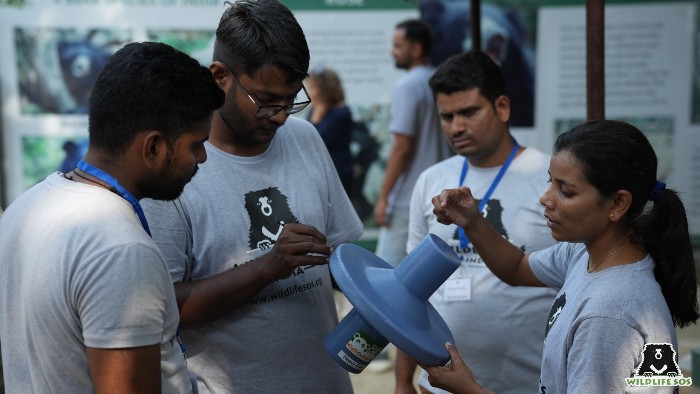
By the end of the workshop, our dedicated staff had received significant knowledge on these techniques, the applications of which have been successful during the target training sessions of the resident sloth bears. Notable among them was the administration of an intramuscular injection to Kabilan, a rescued male sloth bear, who readily presented his hindlimbs to the veterinarians in return for some treats. Moreover, a couple of the sloth bears that took part in the training process have begun to slowly get accustomed to the new cues. A they grew more comfortable in the presence of visiting keepers who were giving indications, the bears became more receptive to tools that were unfamiliar to them, such as clothespins on their nasal flaps.
Beyond the target training sessions, our bear care staff also shared valuable insights with the Bear TAG team on the construction of structural enrichments like hammocks and platforms for our sloth bears. These enrichments are thoughtfully crafted with knotting techniques that are applied on natural and recyclable materials such as bamboo, jute ropes, and sacs.
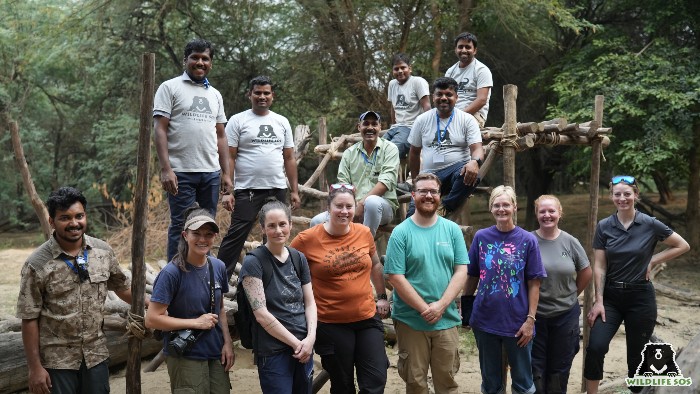
While these structures may not possess the hardiness of those enrichments constructed with nuts and bolts in international zoos, our outlook to create them prioritises the flexibility and adaptability of natural resources. We intentionally design structures that are easily removable and are temporary, allowing us to evaluate their effectiveness and the extent to which the bears use them. This gives us the ability to transform and tailor the structures according to seasons and its utilisation patterns, promoting a sensitive and overall welfare. In addition to this, our approach aligns with the principles of environmental sustainability as the materials are reusable, contributing to the responsible management of resources and reducing waste.
Initiatives of this nature are instrumental in the ex-situ conservation of wildlife. At Wildlife SOS, we wholeheartedly welcome experts from around the world, and embrace collaborative endeavours that include dynamic knowledge-exchange programmes to mutually enrich both groups.
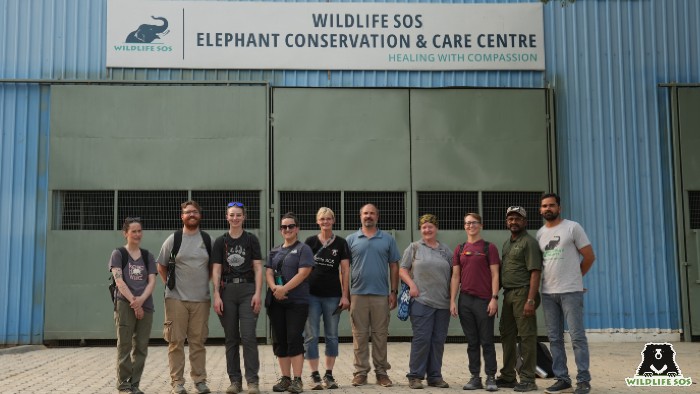
The Bear TAG team’s visit facilitated the convergence of steps practised by global wildlife keepers with those our dedicated animal care staff has initiated. Not only does this enhance our collective commitment to sloth bear welfare, but also fortifies our ongoing efforts in this noble cause.
Join our mission to protect and save wildlife by becoming a monthly donor for Wildlife SOS. Your commitment can help us sustain the welfare of sloth bears residing at our centres.

